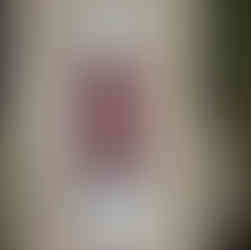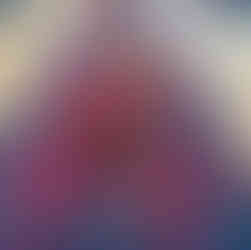Introduction to a project weaving a tartan cloth in the creation of a luxury scarf
Back in the summer I decided that I would weave a tartan cloth in fine 2/17nm merino lambswool on my floor loom. Here I detail the steps that I went through starting with the textile design, the use of a sampling loom and the subsequent weaving of the tartan cloth. I also discuss some of the weaving mistakes that I made and the learning that I took away from this activity.
My starting point was the wish to weave an elegant tartan shawl and maybe a runner for my Christmas table. The first step was to choose my yarn colours and I settled on red, navy with a few accent colours. With these yarn colours in mind I initially painted card in these colours, with the card being cut into strips allowing me to do a basic paper weaving activity. Card winding followed where the yarns were wound round a small piece of card. This card winding gave me an idea of the proportions of each of the yarn colours that I wanted in the final weave. I wanted the final fabric to be predominantly red so the red needed to dominate in the design. However, I also wanted to make sure that I had yarn colours that would 'pop out of the fabric and these colours needed to be present in much smaller proportions. A sample weave using my TabbyandTweed small frame loom with a simple twill design was then undertaken with this activity helping me to finally cement my choice with respect to both the yarn colours and their proportions in the final weave.
Designing the Tartan Cloth
Designing the pattern was the next step. This activity was done on paper using coloured pencils with a focus on making the design symmetrical across the width of the weave. The warp was measured according to my chosen pattern and this is where mistakes were made. A tartan has a very exact pattern, one more or one less warp or weft thread in a particular colour as laid out by the chosen design would have resulted in a very obvious problem with a lack of repeatable symmetry. A few counting errors were made which needed to be rectified by adding in additional warp threads in particular colours or removing unwanted additional warp threads. Counting and counting accurately is needed in order to weave a tartan and I realized that even being good at counting (which I am not sure I am) isn't enough if you lose your concentration! Either way, counting and then checking my counting was something I decided was important.
Once weaving was underway I again recognised the importance of counting and concentration. Some of the colours needed only 4 weft picks so the design needed a lot of shuttle/colour changes. Juggling the shuttles, and keeping a focus on the pattern repeat did at times get the better of me. There were occasions when I had to undo some of my weaving. I also used 6 different colours in the design and as I only have 4 shuttles I had to swap over the yarn bobbins in the shuttles regularly which slowed down the weaving.
Finishing the fabric
Once the weaving was completed and before the fabric was washed and fulled I repaired some of the warp threads. On occasions some of the warp threads had snapped whilst weaving. These threads were replaced during the weaving but the ends needed to be sewn in and the knots removed. As this weave was a simple twill I was able to use a tapestry needle to quite easily weave in these threads and maintain the weaving pattern. A rather more difficult issue was that on one occasion I had missed the weaving of four lighter green threads. Once spotted it would always be obvious (well to me anyway). I decided to replace four darker green threads (whose removal from the fabric would not be obvious) and replace them with the lighter green threads. I could have used a tapestry needle to weave the lighter green threads into the fabric but instead I tied a lighter green thread to a dark green thread within the fabric and pulled both threads across the fabric thus weaving in the lighter green thread in place of the darker green thread. This approach proved surprisingly straightforward, especially as the fabric had not been washed. Had this error been identified after washing when the fabric would have fulled with the threads slightly felted then I would imagine this approach would have been less successful.
Washing a 2/17nm lambswool weave is one of the most rewarding steps in the weaving process. When the fabric comes off the loom it doesn't feel very soft. The yarns are coated in spinning oils which are added to give the fragile yarns a little more strength. Washing the fabric in hot water with some soap until a lather is seen removes all the oils and causes the fabric to plump up and soften forming the most luxurious of fabrics.
The fabric was made into a number of items, a Christmas table runner, an elegant shawl and a lined cowl scarf.
Is Tartan weaving for me? Well I am not sure. I enjoyed the planning and design work, I am thrilled with the final fabric but there were frustrations. If I were to weave a tartan again I would really focus on my counting and concentration and I might also only weave a tartan when I have enough shuttles to weave the chosen colours.
Do sign up to receive my news emails if you might be interested to know more about my weaving, new products and events that I attend - you can sign up here: SIGN UP
If you are looking for a unique luxury handwoven scarf, shawl or snood then do visit my website shop by clicking here.



















